Sushi is often thought of as a Japanese dish, but China has its own way of making it too. The ingredients, flavors, and serving styles can be very different.
From sauces to portion sizes, there’s a lot to explore. This list shows the biggest differences between the two in a fun and simple way.
1. Types Of Fish Used
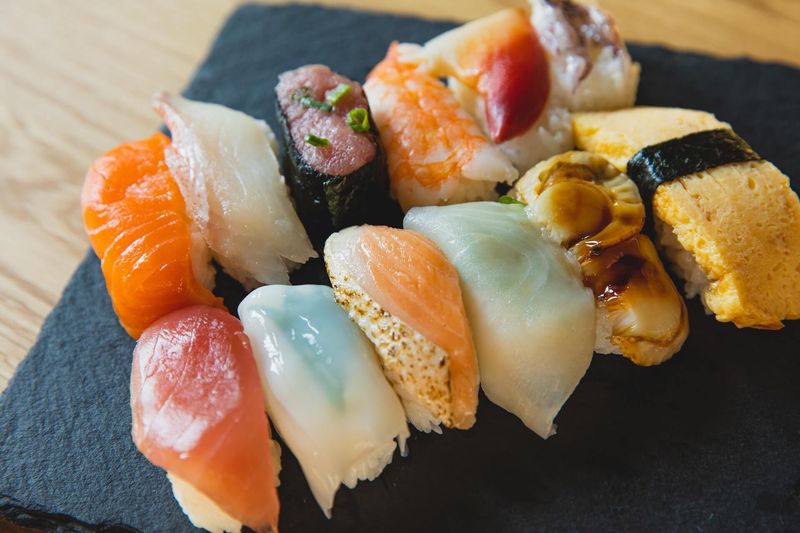
Japanese sushi often highlights raw, high-quality seafood like tuna, salmon, and yellowtail. The fish is usually served in clean, delicate slices that showcase its natural flavor.
Chinese sushi may include more cooked or marinated seafood, such as imitation crab, shrimp, or eel. There’s often more variety in texture and preparation.
2. Sushi Rice Flavoring
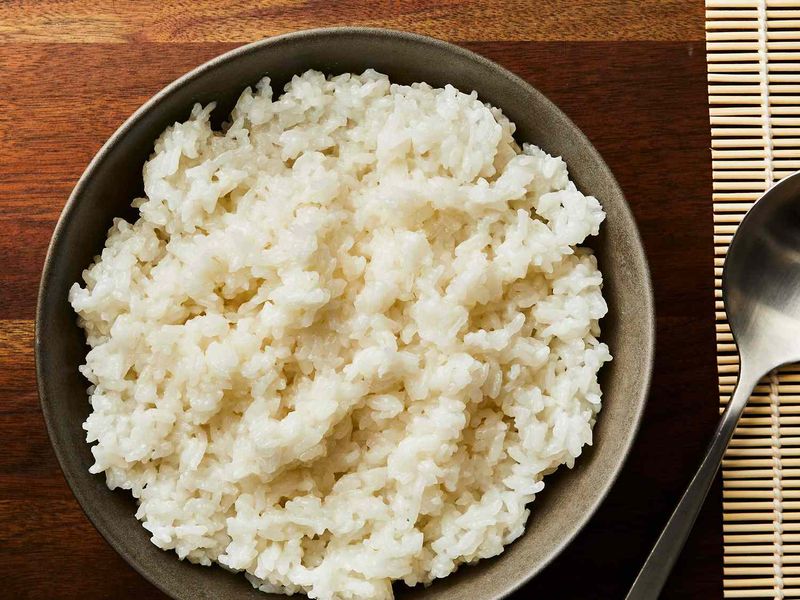
In Japan, sushi rice is seasoned with a precise blend of rice vinegar, sugar, and salt. The result is lightly tangy and never overpowering.
Chinese versions tend to use less vinegar or opt for sweeter, stickier rice. The seasoning may vary more depending on the region or chef.
3. Popular Sushi Styles
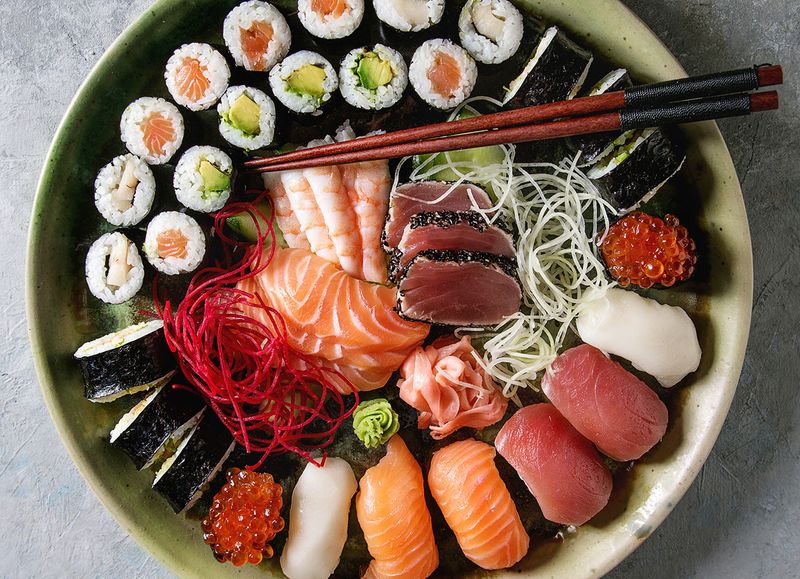
Traditional Japanese sushi includes nigiri, sashimi, and simple maki rolls. These are usually made with minimal ingredients and focus on technique.
Chinese sushi often leans toward decorative, colorful rolls packed with fillings. Larger rolls and fried or baked styles are especially popular.
4. Use Of Sauces
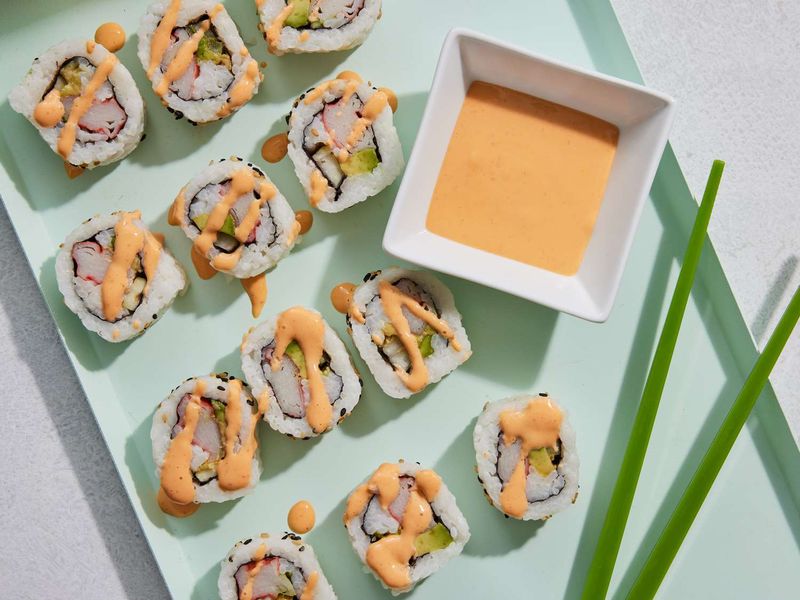
Sauces in Japanese sushi are used sparingly—often just soy sauce or a brush of glaze on eel. The focus stays on the fish itself.
In China, sushi often comes with bold, drizzled sauces like spicy mayo, sweet eel sauce, or wasabi blends. Dips and toppings are more common.
5. Ingredient Freshness

Freshness is a key value in Japanese sushi, where fish is sliced just before serving. Raw ingredients are often handled with great care.
Chinese sushi may rely more on cooked or preserved items, especially in places far from the coast. This changes the flavor and shelf life.
6. Presentation Style

Japanese sushi is known for minimalist beauty—carefully arranged with attention to detail and color balance. Simplicity is part of the art.
Chinese sushi tends to be flashier and more decorative. Rolls might be shaped like flowers or animals, with bright sauces and garnishes.
7. Portion Sizes
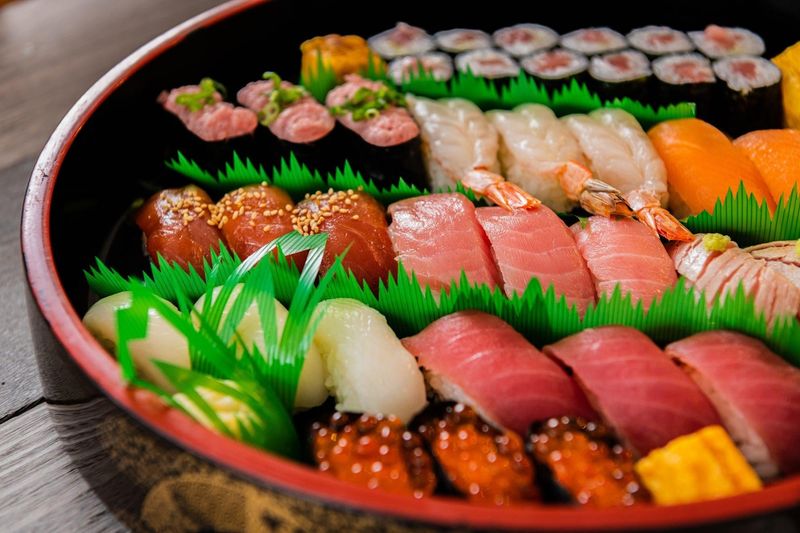
In Japan, sushi is typically served in small, refined pieces meant to be eaten in one bite. Meals are lighter and more delicate.
Chinese sushi rolls are often larger, stuffed with more fillings, and can be quite filling. Portions tend to cater to bigger appetites.
8. Availability Of Fusion Rolls

Japanese sushi sticks close to tradition, although modern twists exist. Fusion rolls are less common in traditional restaurants.
China embraces fusion with open arms—sushi with cheese, fruit, or fried chicken can be found in casual spots and malls.
9. Cultural Significance
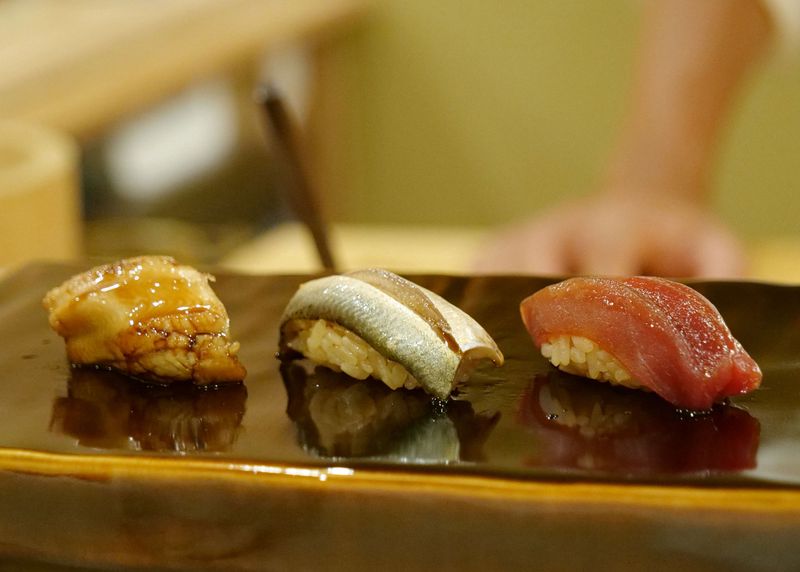
Sushi in Japan is a respected craft, often requiring years of training. It carries deep cultural and historical importance.
In China, sushi is seen more as a trendy, global food. It’s widely enjoyed but doesn’t hold the same cultural weight.
10. Dining Experience
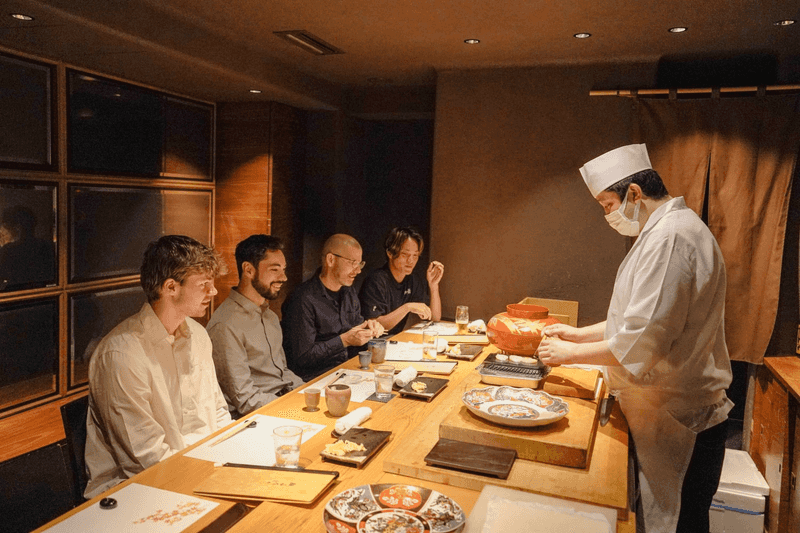
Japanese sushi is often eaten at quiet sushi bars, where chefs prepare it in front of you. The experience is calm and respectful.
In China, sushi is frequently served in buffet-style restaurants or vibrant fusion spots. The atmosphere is more casual and fast-paced.

